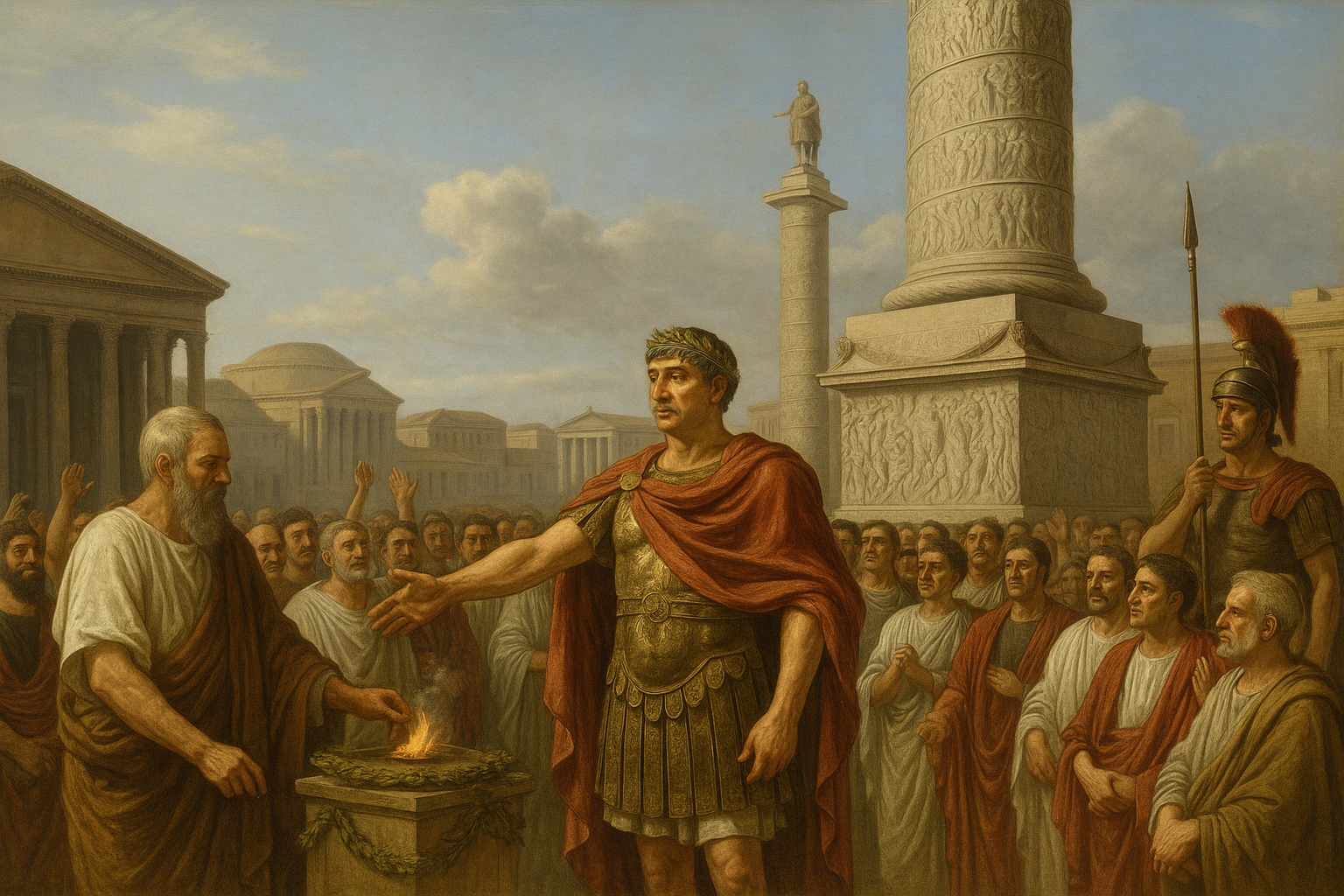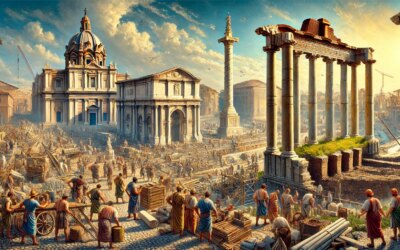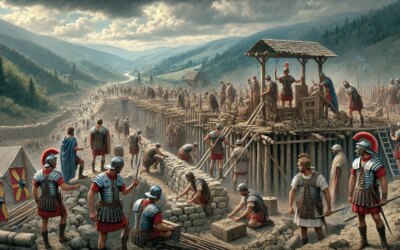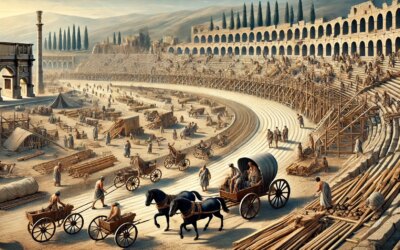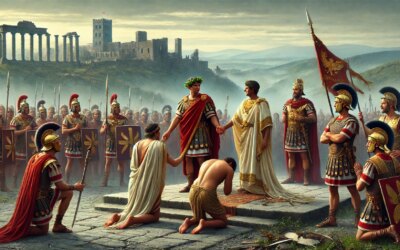Introduction: Rome’s Newest Monument to Victory
In 113 AD, the Roman Forum witnessed a grand ceremony unlike any other: Emperor Trajan himself unveiled Trajan’s Column, a towering marble tribute to his successful Dacian campaigns. Commissioned by the Senate and designed by the celebrated architect Apollodorus of Damascus, the column combined artistry and propaganda, weaving scenes from Trajan’s military exploits into a spiraling bas-relief over 30 meters high. The unveiling symbolized Rome’s might, commemorated fallen soldiers, and solidified Trajan’s legacy as the empire’s greatest conqueror.
Trajan: The Soldier-Emperor
Marcus Ulpius Trajanus, known simply as Trajan, ruled from 98 to 117 AD and is often regarded as the greatest of Rome’s “Five Good Emperors.” Born in Italica (present-day Spain), Trajan rose through military ranks before being adopted by Emperor Nerva. His tenures saw unparalleled territorial expansion, social welfare programs, and architectural renewal. Unlike predecessors who focused on internal reforms, Trajan led two major wars against the Dacians (101–102 and 105–106 AD), annexing rich Dacia (modern Romania) and incorporating its wealth—especially gold mines—into the empire.
Conception and Construction
Following victory in Dacia, the Senate decreed a monument to celebrate Rome’s triumph. Apollodorus of Damascus, already famed for engineering the massive Trajan’s Bridge over the Danube, designed the column. Construction began in 107 AD, employing local Italian marble. The column comprises a series of 20 colossal drums, each carved with a continuous spiral relief depicting over 2,500 individual figures in 114 scenes. Inside, a hidden spiral staircase of 185 steps leads to a platform at the top where Trajan’s statue originally stood (later replaced by St. Peter). The pedestal houses Trajan’s tomb, containing his ashes and those of his wife, Plotina.
Iconography and Narrative Relief
The column’s relief unspools like a visual narrative, beginning with Trajan’s departure from Rome, crossing the Danube, building forts, and engaging in key battles of the Dacian War. The attention to detail is extraordinary: soldiers constructing fortifications, Dacian nobles pleading for peace, and Roman cavalry charging. Scenes of sacrifice, reconnaissance, and river crossings clarify logistical challenges, while defeated Dacians are shown in supplication. This not only glorified Trajan’s leadership but served as a pedagogical tool: citizens and visitors could “read” the emperor’s achievements in stone.
Dedication Ceremony
The dedication took place on September 12, 113 AD, during the Quinquennalia, a five-year anniversary celebration of Trajan’s accession. The Forum was decorated with banners and garlands. Trajan, clad in a purple-striped toga, processed to the column’s base alongside senators and military officers. As the veil dropped from the statue atop the column, trumpets sounded, and the assembled crowd cheered. Priests performed sacrifices at the altar in front, and poets recited verses extolling Rome’s dominion. The ceremony underscored the unity of military success, civic pride, and divine favor.
Architectural Impact and Innovations
Trajan’s Column set a new standard for imperial monuments. Its blend of functionality—housing a tomb and providing a viewing platform—and elaborate sculptural narrative was groundbreaking. Later monuments, such as Marcus Aurelius’s column (constructed in 193 AD), directly copied its format. The column also influenced medieval and Renaissance triumphal columns throughout Europe. Apollodorus’s design demonstrated advances in precise carving, stone transport, and assembly, reflecting Rome’s mastery of engineering.
Legacy and Conservation
Over nearly two millennia, Trajan’s Column weathered earthquakes and pilfering, yet it remains remarkably intact. In the Middle Ages, its spiraling relief was obscured by dirt and soot until Renaissance scholars cleaned and studied it, sparking renewed interest in classical antiquities. Today, it stands as a UNESCO World Heritage Site, a centerpiece of the Archaeological Park of the Roman Forum. Visitors can still ascend the internal stairs (closed to the public since 1587 for conservation) and marvel at the vistas once enjoyed by Trajan himself.
Conclusion: Stone, Story, and Imperial Memory
Trajan’s Column stands not merely as a feat of architecture but as a stone-scroll chronicling Rome’s zenith under its most illustrious emperor. The dedication ceremony of 113 AD marked a moment when empire, artistry, and memory converged. Through its spiral relief, Trajan’s victories were immortalized for all to see— a potent reminder that in Rome, stone could speak louder than words, and emperors could achieve a kind of immortality through the narratives carved into marble.

